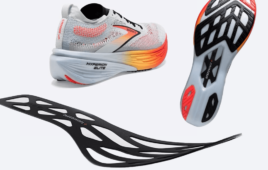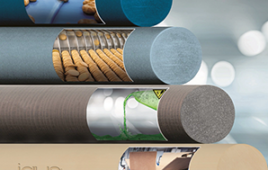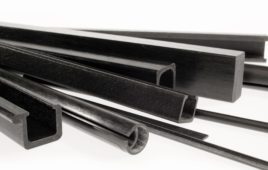Northern China’s roadsides are peppered with deciduous phoenix trees, producing an abundance of fallen leaves in autumn. These leaves are generally burned in the colder season, exacerbating the country’s air pollution problem. Investigators in Shandong, China, recently discovered a new method to convert this organic waste matter into a porous carbon material that can be used to produce high-tech electronics. The advance is reported in the Journal of Renewable and Sustainable Energy, by AIP Publishing.
The investigators used a multistep, yet simple, process to convert tree leaves into a form that could be incorporated into electrodes as active materials. The dried leaves were first ground into a powder, then heated to 220 degrees Celsius for 12 hours. This produced a powder composed of tiny carbon microspheres. These microspheres were then treated with a solution of potassium hydroxide and heated by increasing the temperature in a series of jumps from 450 to 800 C.
The chemical treatment corrodes the surface of the carbon microspheres, making them extremely porous. The final product, a black carbon powder, has a very high surface area due to the presence of many tiny pores that have been chemically etched on the surface of the microspheres. The high surface area gives the final product its extraordinary electrical properties.
The investigators ran a series of standard electrochemical tests on the porous microspheres to quantify their potential for use in electronic devices. The current-voltage curves for these materials indicate that the substance could make an excellent capacitor. Further tests show that the materials are, in fact, supercapacitors, with specific capacitances of 367 Farads/gram, which are over three times higher than values seen in some graphene supercapacitors.
A capacitor is a widely used electrical component that stores energy by holding a charge on two conductors, separated from each other by an insulator. Supercapacitors can typically store 10-100 times as much energy as an ordinary capacitor, and can accept and deliver charges much faster than a typical rechargeable battery. For these reasons, supercapacitive materials hold great promise for a wide variety of energy storage needs, particularly in computer technology and hybrid or electric vehicles.
The research, led by Hongfang Ma of Qilu University of Technology, has been heavily focused on looking for ways to convert waste biomass into porous carbon materials that can be used in energy storage technology. In addition to tree leaves, the team and others have successfully converted potato waste, corn straw, pine wood, rice straw and other agricultural wastes into carbon electrode materials. Professor Ma and her colleagues hope to improve even further on the electrochemical properties of porous carbon materials by optimizing the preparation process and allowing for doping or modification of the raw materials.
The supercapacitive properties of the porous carbon microspheres made from phoenix tree leaves are higher than those reported for carbon powders derived from other biowaste materials. The fine scale porous structure seems to be key to this property, since it facilitates contact between electrolyte ions and the surface of the carbon spheres, as well as enhancing ion transfer and diffusion on the carbon surface. The investigators hope to improve even further on these electrochemical properties by optimizing their process and allowing for doping or modification of the raw materials.
Filed Under: Capacitors, Materials • advanced




